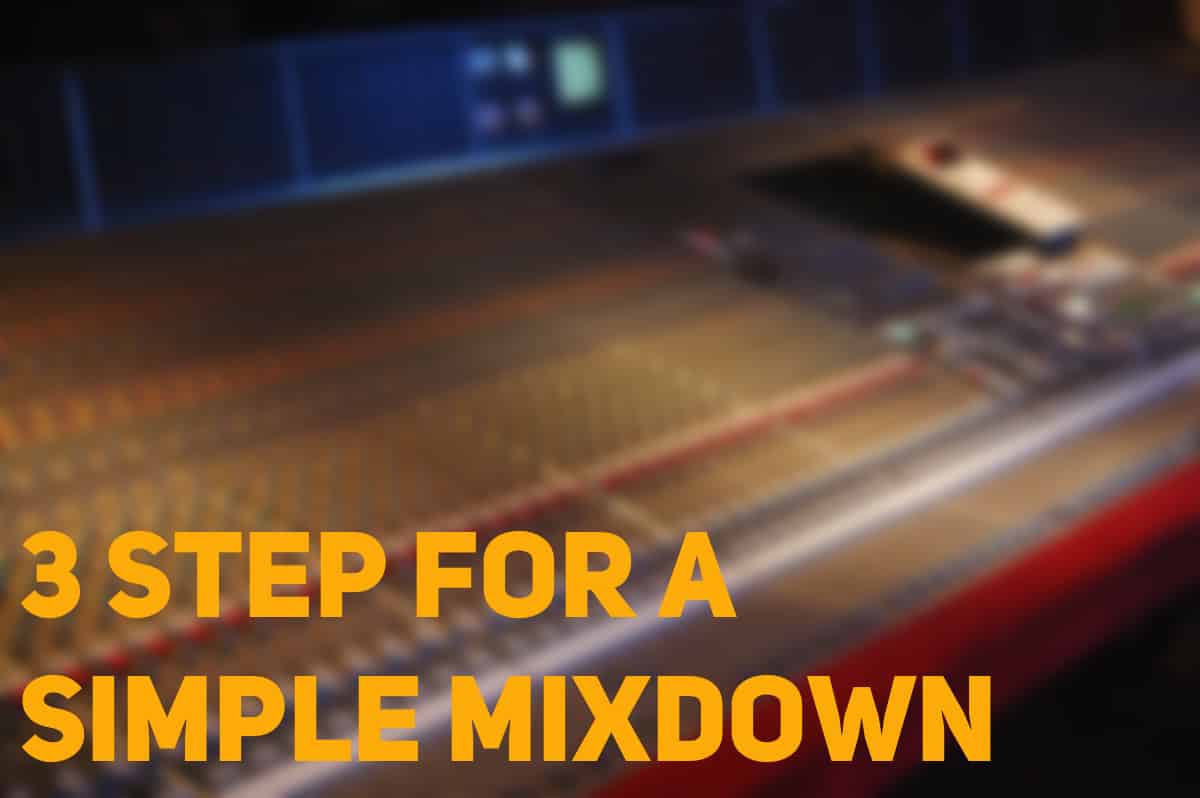
Set Up for Success – 3 Steps for a Simple Mixdown
Music producers (especially those of us just starting out) often see mixing as one of the most frustrating aspects of finishing their next track. The mix of a song can be responsible for making it a hit or leaving it lifeless. There are certain methods which are key to perfecting this craft so here are some factors that you need to keep in mind while working on your music:
1: Knowing What To Listen For
If you’re anything like me, when you first started producing you probably had extreme narrow EQ boosts, tons of sub information from multiple instruments bleeding together, and sharp high end on a few of your instruments that “weren’t coming through the mix”. Honestly, that’s great. Why? It means you were making music and that’s goal for getting better at listening. It’s just practice. The more we make music and focus on tone, sound design, space, etc… the better our ears get at hearing tiny variations and subtleties. It’s hard to know what to listen for if you haven’t trained your ears and given them enough experience. Here’s a simple checklist you can use:
- Did I EQ out all sub information from non-bass instruments?
- Do I need to Compress and/or layer instruments because something sounds thin?
- Do I need to check for masking because something sounds muddy?
- Are my drums thick and punchy or should I add some compression?
Are you seeing the pattern here? Most audio issues can be solved with simple EQ, panning, and compression. Never underestimate simple basic techniques. Greatness comes with time and effort. There isn’t really a way around it, but that’s great! You’re in this to win this, right? Right! So keep putting in the work and before you know it your mixing will stand apart from the rest.
2: Choosing The Right Sounds & Samples
This is just as important for mixing as it is for defining yourself as an artist. I think we can all agree that some of our favorite artists all have a sound that defines them (think DJ Snake’s vocal leads). These sounds are not just defining the artist though, they are also aiding them in the mixing process. How? When you start out with a terrific sounding sample or instrument, you’re going to have a much easier time when you get to the mixing stage of your song. So how can you do this? You can use high-quality samples from reputable sources or you can make your own using software instruments (Analog or VSTs) or real recordings. After you have some sounds you love, build a selector kit to put them in it. If you want to know how to build a selector kit, go here. A good tip to remember with your drums is that they are the foundation of your track, so if their attitude is missing it will translate to the overall vibe of your song. Find your favorite drum samples and if you have the resources or ability, take them to professional studio, run them through analog gear and resample them. If you don’t have that access, no worries. Ableton has a plethora of amazing audio effects that can give you a totally unique sound. After you do this for the drums, you can try it on and save some of your favorite synth sounds as presets as well. In Ableton, just hit floppy disc symbol in the upper left (or right depending on if you’re saving a rack or an individual instrument) and then name the preset in the browser window. Remember, starting off with the right sounds will streamline your mixing as well as your production so spend a day or even a week curating your sample library.
3: Layering And Organizing
Once you have a basic idea of what you’re trying to achieve and you have started to lay down a foundation of your track, think about what is going to go where and why. It’s always good to look through your project and ask yourself, “does this need to be here?” Less is almost always more. Let’s be a little more specific. Let’s say you have two really cool lead sounds in your track. Maybe one is plucky and the other is playing legato notes. They sound nice together but they have fundamentals in the same octave range and they’re masking each other a bit, which is making the track muddy. From a mixing standpoint, we know just leaving the two conflicting sounds as they are isn’t going to work but the producer side of us might be attached to the way things are. In most cases, we’re going to need to make a sacrifice but perhaps we can come to a compromise. If both sounds are in the same frequency range, maybe we can move one of the two up or down an octave. That can fill out some other frequencies and then we can EQ to make the two sounds feel a little more separated from each other. Maybe we can try a call and response approach. Let the pluck come in for the first two bars and then switch to the legato notes for the second two bars. This could create an interesting dynamic and you will get to keep the original tones of the sounds you wanted. Maybe you can take one of the sounds out altogether. Two isn’t always better than one! You can focus on one of your two lead sounds and beef it up. You can try duplicating the lead sound, pitching it down an octave, and then bringing the volume down until it’s adding just a touch of thickness to your lead sound.
There are a million tips and techniques that can help you on your journey. Ultimately, the most important one is always going to be practice. Just keep making music every chance you get and implement the new techniques you learn into every new project you start. Eventually, your ear will develop to the point that mixing and every other aspect of creating music becomes second nature.








0 responses on "Set Up for Success - 3 Steps for a Simple Mixdown"